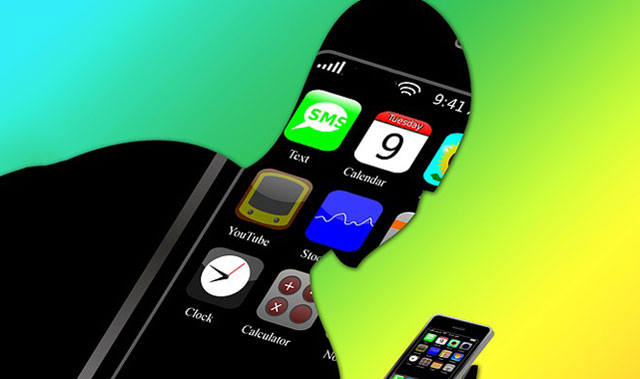
Phones are all around us. When we look up from our own, we see that everyone else is looking down at theirs. Our phones are with us wherever we go, in our pockets, our bags, in our hands. A recent Pew research report outlines the ways that phones have become ubiquitous; for a growing number of people, in particular those aged 18-29, the smartphone provides their primary access to the Internet.
As well as using our phones more, we are also accessing multiple forms of content on these devices. We make and watch videos, we take and share photos. We chatter. We play games. We watch movies and TV. We listen. And we read. We read texts and messages, we read social media feeds, we read journalism, we read gossip, we read commentary. A lot of the time we spend staring at our phones we are reading.
And yet most of us don’t consider our phones to be our primary reading device, despite evidence to the contrary; when asked “what are you reading?” — does anyone ask this question anymore? — we might look a bit guilty, as the title of the last book we finished escapes us. While people do read e-books on their phones via apps like Kindle and Kobo, they are in a minority. Many people find the temptations of Candy Crush and Facebook to be too great a distraction and prefer to do their reading offline via printed books and e-readers; many more people don’t make it off their smartphones and into the book at all.
While reading fiction has long been a minority pursuit, the ubiquity of the e-book — the static electronic copy of a print book — has restricted the growth of new forms of writing that could be native to smartphones and tablets. Publishers are, understandably, fixated on preserving their business models; they publish books. Fiction writers are fixated on the publishing industry; they write books. The margins are low in publishing, perhaps too low to attract the kind of new content providers that we are seeing in television currently, where multiple new commissioners, including Netflix and Amazon, have appeared.
On the other hand, the Internet has facilitated a dramatic explosion of self-publishing. The success of the online writing portal Wattpad, with its 40m users in the coveted 18-30 age bracket, has been spectacular. Wattpad’s founder, Allen Lau, says that 85% of Wattpad users read and write their stories on their smartphones and tablets.
But even Wattpad, with its emphasis on publication by chapter and ongoing feedback from readers, resembles the magazine serialisations of Charles Dickens and Wilkie Collins more than it does any truly native form of writing for the new devices. And the main difference between today’s writers and their 19th century forerunners is that while Wilkie Collins and Charles Dickens got paid for what they wrote, the only way Wattpadders can hope to make a living is to transition to a traditional publishing deal.
Audiobooks have also found huge new audiences via the smartphone. Audible, Amazon’s audiobook division, is now experimenting in commissioning audio drama content from writers. They are clearly hoping for their own income-generating version of the must-be-heard-experience from earlier this year, NPR’s Serial.
Outside the box
And there are more unusual ideas too — my Bath Spa University colleague Naomi Alderman and the games company Six to Start scored a big hit with their audio narrative app for runners, Zombies, Run!, last year. The fitness game encourages you to run by describing the hordes of zombies at your back — and with more than a million sales under their belts, this form of storytelling works.
So, new forms of storytelling native to the new devices are proliferating, but are difficult to find unless you already know what you are looking for. Other recent projects that demonstrate some of the potential: there’s Karen, Blast Theory’s compelling take on the perils of life coaching, which uses interactive video to take you directly into Karen’s life. And also the text message story Lifeline, about an astronaut crashed on a distant planet who needs you to help him figure out how to survive. These two examples demonstrate two different business models for the creation of this type of work: Karen was created with support from the Arts Council England and BBC digital platform The Space; Lifeline costs about R35 in the app stores.
As the intersection between creative writing and technology deepens, as the book moves beyond the e-book — beyond the static electronic copy — what shape will storytelling take? As we shift more and more of our content consumption onto our smartphones, will text as we know it — literary text — survive in a landscape that privileges more visual forms of storytelling?
As we move into what theorist Florian Cramer calls the post-digital age, do writers need to leave the book entirely and think in completely new ways to create stories truly native to our new reading habits and devices? These are all questions ripe for writers and technologists to explore.![]()
- Kate Pullinger is professor of creative writing and digital media at Bath Spa University
- This article was originally published on The Conversation




